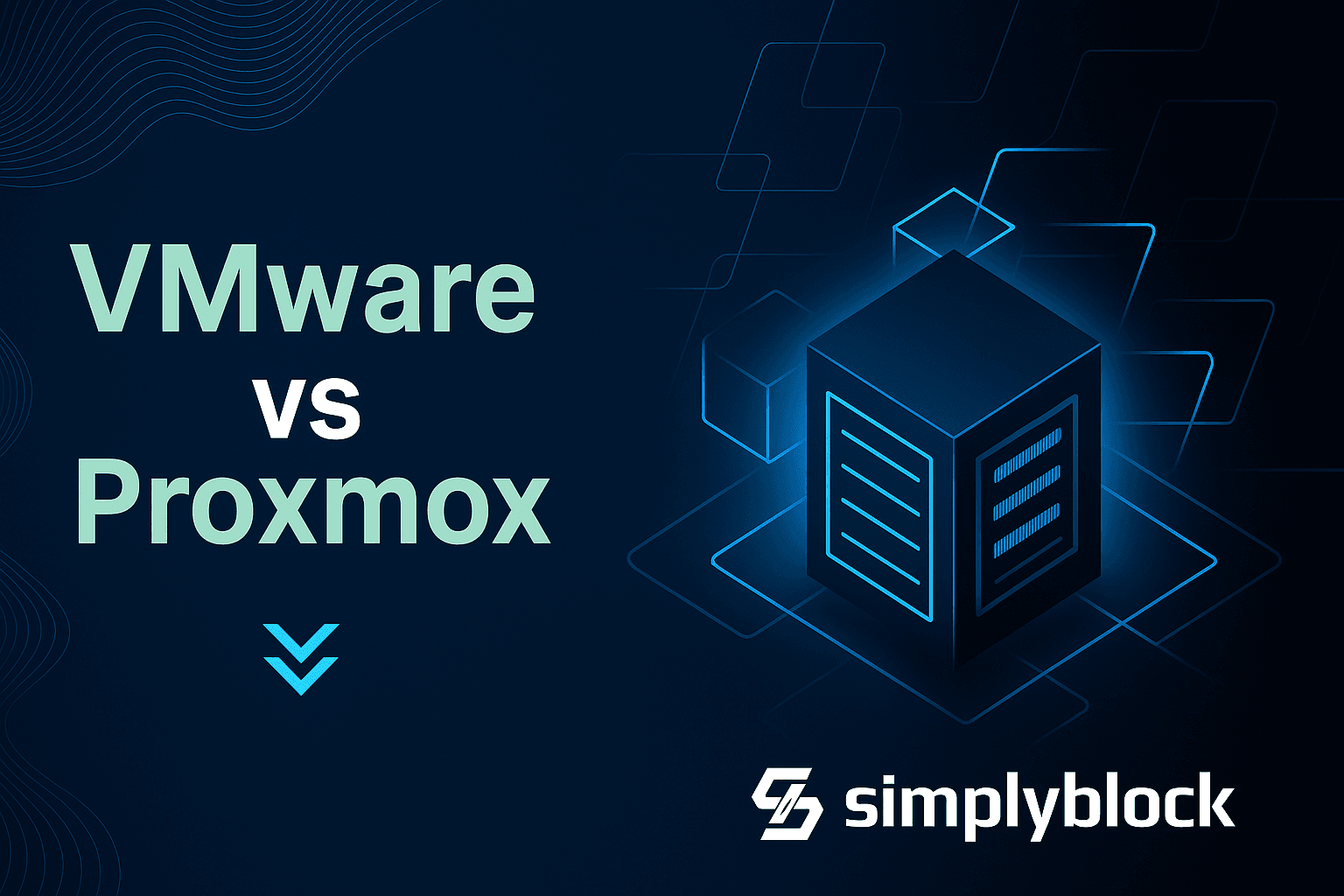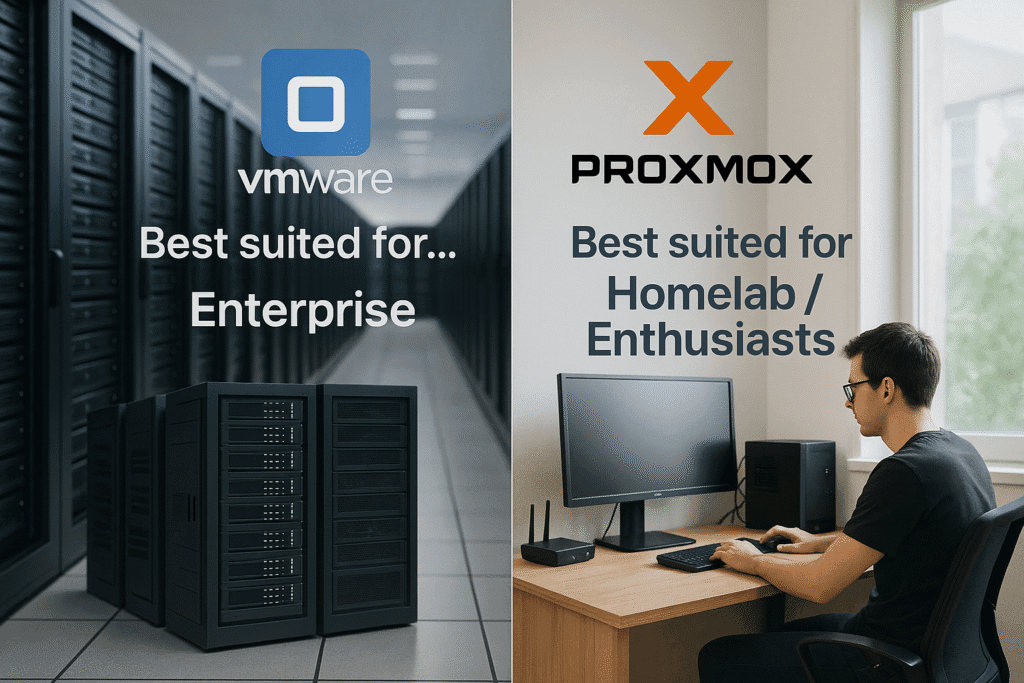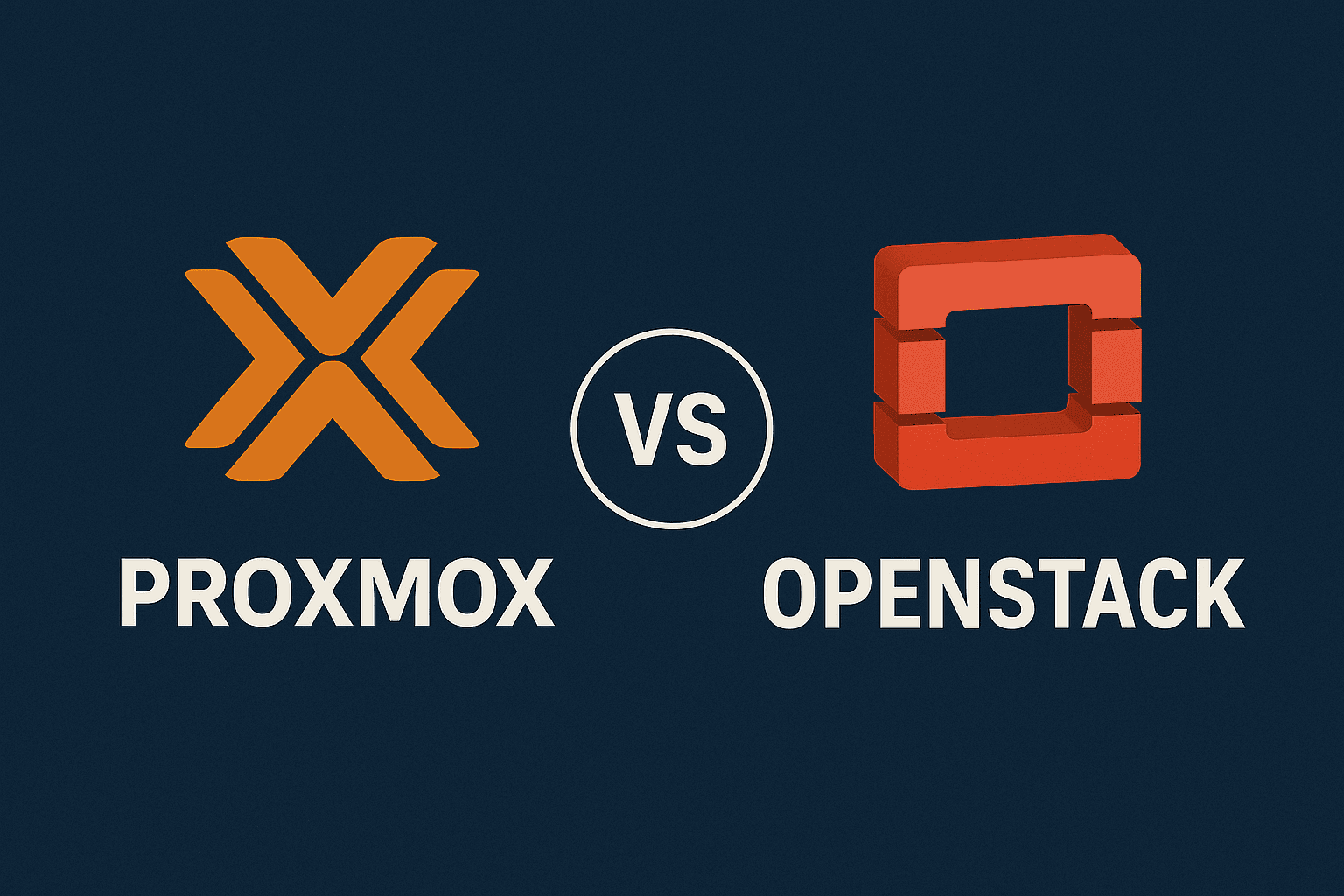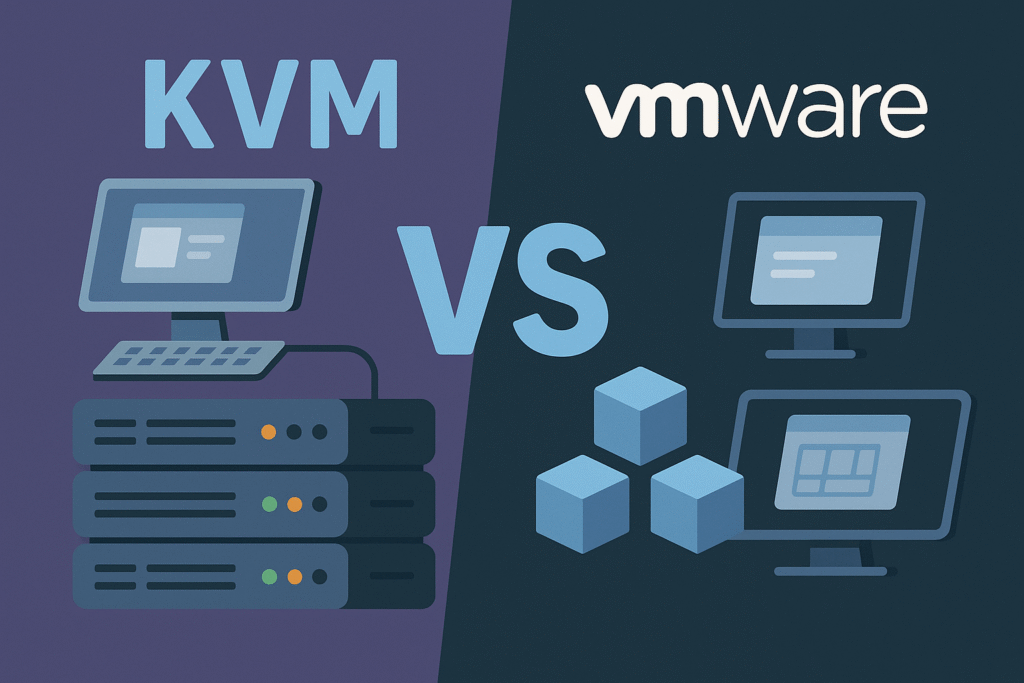
The VMware vs Proxmox conversation often sounds like you have to pick one over the other, but the reality is more nuanced. Each platform serves different needs and comes with its trade-offs. VMware is the long-time enterprise favorite, while Proxmox is gaining popularity for its flexibility, cost-efficiency, and open-source model.
Choosing the right fit can help reduce overhead, improve performance, and give your team the kind of control that scales with your infrastructure.
What is VMware?
VMware is a commercial-grade virtualization platform that uses a Type 1 hypervisor (ESXi) to create and manage virtual machines. It’s the go-to choice for enterprises that need strict uptime, certified support, and a fully integrated ecosystem.
VMware is built around the concept of centralized management using tools like vCenter, and it offers high-availability clustering, disaster recovery integrations, and storage solutions like vSAN.
🚀 Storage for Proxmox, Optimized for Modern Workloads
Power your Proxmox deployments with NVMe speed and Kubernetes-native flexibility.
👉 Try Simplyblock for Proxmox Storage →
Common use cases for VMware
- Enterprise data centers: Where uptime, SLAs, and support contracts matter.
- Regulated industries: Environments that require audited software and vendor-backed security updates.
- Large-scale clusters: Where high availability, automation, and failover are mission-critical.
- Hybrid cloud deployments: Seamless integration with platforms like AWS (VMware Cloud on AWS).
- Legacy app hosting: Where app compatibility depends on running full guest OS environments.
Key strengths of VMware
- Mature, battle-tested ecosystem
- Enterprise support and certifications
- Integration with third-party enterprise tools
- Advanced HA, DRS, and storage clustering features
- Clean UI/UX for managing large clusters
If you’re managing VMware-based workloads, you might benefit from storage designed for VMware environments or migrating from VMware to Kubernetes.

What is Proxmox?
Proxmox VE (Virtual Environment) is a powerful, open-source virtualization platform that combines KVM (for VMs) and LXC (for containers) under one management interface. It’s designed to be simple to use, flexible to deploy, and transparent in pricing.
Proxmox doesn’t rely on third-party tools to offer functionality like backups, clustering, or snapshots. It does all of that out of the box. And because it’s open source, you can audit, customize, and scale it without worrying about vendor restrictions.
Common use cases for Proxmox
- Startups and SMBs: Teams that want robust virtualization without high license costs.
- Development/test labs: Easy spin-up of virtual machines or containers for experimentation.
- Edge or remote sites: Lightweight footprint makes it perfect for edge or air-gapped deployments.
- Home labs and MSPs: Popular among IT pros who want full control.
- Mixed environments: Running both VMs and containers side-by-side.
Key strengths of Proxmox
- No license fees for core features
- Built-in support for ZFS, Ceph, and local backups
- Easy web-based cluster management
- Lower resource overhead
- Open source and fully transparent
If you’re aiming for cost control, flexibility, or want to avoid vendor lock-in, Proxmox delivers a lot more freedom without sacrificing functionality.
How VMware and Proxmox work
VMware uses a Type 1 hypervisor (ESXi) that runs directly on bare metal. VMs run full guest operating systems and are tightly integrated into the VMware ecosystem. Features like clustering, resource pools, and storage management are handled via vCenter.
Proxmox, on the other hand, uses KVM for VMs and LXC for containers. It provides a unified management UI that runs in the browser and offers features like snapshots, live migration, backups, and cluster management out of the box, without needing extra tools or licenses.
You can learn more about KubeVirt for virtualization if you’re considering container-native alternatives.
Comparing VMware and Proxmox for Virtualization Needs
Choosing between VMware and Proxmox depends on your infrastructure needs, licensing model, and level of control. This quick comparison highlights how each performs across core virtualization features.
| Feature | VMware | Proxmox |
|---|---|---|
| License | Commercial, paid | Open source, optional support |
| Hypervisor type | ESXi (Type 1) | KVM + LXC |
| Cluster management | vCenter | Built-in web UI |
| Container support | Needs extra setup | Native LXC support |
| Backup & snapshots | Via third-party (e.g., Veeam) | Built-in |
| Storage options | vSAN, iSCSI, NFS | ZFS, Ceph, LVM, NFS |
| Resource overhead | Moderate to high | Low |
| Cost structure | Tiered, license-based | Free core, flat support pricing |
| Ideal for | Enterprise, regulated sectors | SMBs, labs, modern IT stacks |
Can you use VMware and Proxmox together?
Yes — and many teams already do.
It’s common to see Proxmox used in non-critical environments (like dev/test or edge sites), while VMware powers core infrastructure. Others use Proxmox as a migration path away from VMware to cut costs or regain flexibility.
For teams exploring containerization, combining both with a modern stack like Kubernetes on VMware Tanzu or Kubernetes-native databases makes sense.
Why storage matters for both
Virtualization is only as good as the storage it relies on. Whether you’re using Proxmox or VMware, latency, throughput, and data redundancy matter — especially at scale.
Efficient storage makes backups faster, keeps apps responsive, and ensures you’re not losing performance when workloads shift. This is especially true for setups involving fast backup and disaster recovery, or if you’re minimizing RPO/RTO with multi-AZ architecture.
Why Simplyblock is built for VMware and Proxmox users
Whether you’re running virtual machines on VMware or clusters on Proxmox, Simplyblock gives you fast, reliable block storage that’s ready for production. From low-latency performance to seamless backups and disaster recovery, it’s designed to support the demands of modern infrastructure without the usual overhead.
Choosing what works for you
There’s no universal winner here — just a better fit for your specific needs.
If you’re running mission-critical apps with enterprise requirements, VMware is still a strong bet. It’s stable, supported, and deeply integrated with tools used across Fortune 500 companies.
But if you want more control over your infrastructure, fewer vendor constraints, and a more transparent cost structure, Proxmox offers serious advantages, especially as organizations look to scale efficiently without ballooning costs.
If cost-efficiency is your priority, check out how Simplyblock enables cloud cost optimization through AWS storage tiering and optimizes Kubernetes costs.
As more teams shift toward open infrastructure models, Proxmox is no longer just the budget-friendly alternative — it’s the go-to choice for many modern IT setups.
Questions and answers
VMware is a proprietary hypervisor widely used in enterprise environments for its robust features, scalability, and strong vendor support. For users integrating storage into VMware environments, Simplyblock supports VMware virtualization seamlessly for high-performance workloads.
Proxmox VE is an open-source virtualization platform combining KVM and LXC with a web-based interface. It is ideal for cost-conscious users seeking flexibility and control. Simplyblock offers native support for Proxmox Virtual Environment, enabling advanced storage configurations.
Proxmox excels in open-source environments with its transparent architecture and no vendor lock-in, while VMware provides a polished, enterprise-ready experience. Users building open systems may prefer Proxmox for easier cloud cost optimization and storage flexibility.
Proxmox’s free licensing and low hardware demands make it highly appealing for small businesses. In contrast, VMware offers enterprise-grade features at a premium. Companies prioritizing performance without high costs can leverage Simplyblock’s pricing with either option.
VMware requires paid licenses and offers premium support, whereas Proxmox uses a subscription model for updates and support, with a free core offering. Organizations needing full support should consider the trade-off in vendor commitment and access to documentation and support tools.



